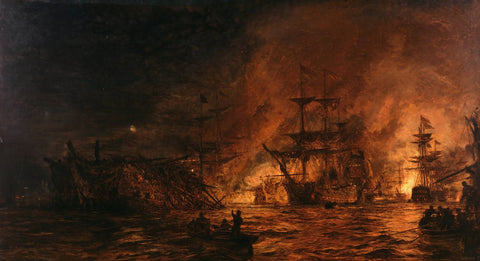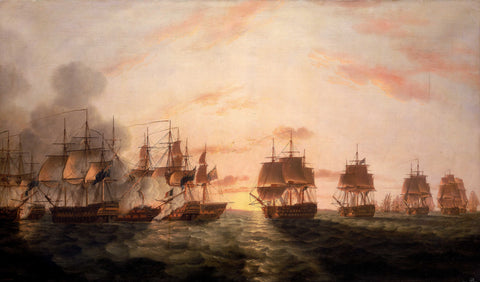- Australia ▾
- Topographic
▾
- Australia AUSTopo 250k (2024)
- Australia 50k Geoscience maps
- Australia 100k Geoscience maps
- Australia 250k Geoscience maps
- Australia 1.1m Geoscience maps
- New Zealand 50k maps
- New Zealand 250k maps
- New South Wales 25k maps
- New South Wales 50k maps
- New South Wales 100k maps
- Queensland 10k maps
- Queensland 25k maps
- Queensland 50k maps
- Queensland 100k maps
- Compasses
- Software
- GPS Systems
- Orienteering
- International ▾
- Wall Maps
▾
- World
- Australia & New Zealand
- Countries, Continents & Regions
- Historical
- Vintage National Geographic
- Australian Capital Territory
- New South Wales
- Northern Territory
- Queensland
- South Australia
- Tasmania
- Victoria
- Western Australia
- Celestial
- Children's
- Mining & Resources
- Wine Maps
- Healthcare
- Postcode Maps
- Electoral Maps
- Nautical ▾
- Flags
▾
- Australian Flag Sets & Banners
- Flag Bunting
- Handwavers
- Australian National Flags
- Aboriginal Flags
- Torres Strait Islander Flags
- International Flags
- Flagpoles & Accessories
- Australian Capital Territory Flags
- New South Wales Flags
- Northern Territory Flags
- Queensland Flags
- South Australia Flags
- Tasmania Flags
- Victoria Flags
- Western Australia Flags
- Gifts ▾
- Globes ▾
Dear valued customer. Please note that our checkout is not supported by old browsers. Please use a recent browser to access all checkout capabilities
The Battle of Copenhagen by Nicholas Pocock
$69.95
or make 4 interest-free payments of
$17.49 AUD
fortnightly with
![]() More info
More info
The Battle of Copenhagen — Nicholas Pocock (1809)
Guns working in grey light, anchors down, resolve unblinking. This fine-art reproduction—after Nicholas Pocock, 1809—fixes 2 April 1801, when Nelson attacked the Danish line at anchor to break the Armed Neutrality of Russia, Sweden, Denmark and Prussia. Amid smoke and shoals his plan was simple and ruthless: concentrate on sections of the defence and defeat them in detail. Signals of recall flew—Nelson famously raised the glass to his blind eye—yet the fight ground on to truce, diplomacy, and an armistice that unpicked the coalition.
Why it captivates
-
Nelson’s second great battle — a twin to the Nile, fought against an enemy at anchor.
-
Audacity under pressure — recall signal ignored; the line holds; the guns decide.
-
Topographic truth — channels, shoals and bomb-vessel arcs rendered with seamanlike care.
-
Command focus — Elephant flying the blue vice-admiral’s flag, calm at the furnace’s centre.
-
Engraver’s detail — painted for reproduction, every spar and splash earns its place.
What you’ll see
Nelson’s line, anchored and hammering at the Danish line that lies between him and Copenhagen. Slightly left of centre, his flagship HMS Elephant flies the blue vice-admiral’s flag. Along the bottom right, bomb vessels ride the edge of the Middle Ground shoal, lobbing shells over both fleets toward the city. The panorama reads like a chart come alive: gun smoke drifting down the channels, wreckage in slick water, masts fading into a cold northern sky.
A richer historical frame
In early 1801 the Northern coalition threatened Britain’s trade and naval reach. Nelson intended to isolate Danish positions and break them piecemeal; the outcome remained in doubt until he treated for a truce to save the wounded in burning hulks—while using diplomacy, threat and bluff to secure an armistice. News of Tsar Paul I’s assassination (received in London before the battle) helped collapse the league soon after.
A Bristol sailor before he painted, Pocock worked from annotated drawings and sketch plans; this canvas was executed for engraving in Clarke & MacArthur’s Life of Nelson (1809).
Choose your finish
🌟 Heavyweight Paper (160 gsm matte)
-
Archival-grade, smooth matte stock ideal for framing under glass.
-
Crisp linework and legible labels with minimal glare.
💎 Laminated (True Encapsulation)
-
Encapsulated in 2 × 80-micron gloss laminate, sealed edge-to-edge for durability.
-
Wipe-clean surface—perfect for classrooms, studios and busy spaces.
🪵 Laminated + Timber Hang Rails (Ready to hang)
-
Lacquered natural timber rails with fitted hanging cord; no frame required.
-
Please allow up to 10 working days for hang-railed delivery.
🏆 Archival Canvas (395 gsm HP Professional Matte)
-
Museum-quality texture with pigment-based, fade-resistant inks for rich tone and crisp detail.
🪵 Canvas + Timber Hang Rails (Gallery-ready)
-
As above, supplied with lacquered natural timber rails and hanging cord.
-
Please allow up to 10 working days for hang-railed delivery.
Size (W × H)
841 × 593 mm (approx. 33.11 × 23.35 in)
-
Orientation: Landscape
-
Aspect ratio: ~1.418 : 1 (close to A-series)
-
Nearest standard frame: A1 (594 × 841 mm) — landscape
-
Framing tips:
-
Classic look: Use an A1 frame with a mat window cut slightly undersize (e.g., ~837 × 589 mm) to overlap edges by 2–3 mm.
-
Contemporary look: Float-mount in an A1 frame; the ~1 mm height difference to A1 is easily absorbed for an even reveal.
-
Custom sizing: Available on request (alternate aspect ratios or adding a white border).
Specifications
| Feature | Details |
|---|---|
| Title | The Battle of Copenhagen, 2 April 1801 |
| Painted/Date | Nicholas Pocock, 1809 |
| Historical Context | Nelson attacks the Danish line at anchor; recall signal ignored; truce offered to save wounded; Armed Neutrality collapses after news of Tsar Paul I’s death |
| Commission/Provenance | Executed for engraving in Clarke & MacArthur’s Life of Nelson (1809) |
| Print Size | 841 mm (W) × 593 mm (H) |
| Available Finishes | Paper, Laminated, Laminated + Timber Hang Rails, Canvas, Canvas + Timber Hang Rails |
| Paper Weight | 160 gsm archival matte |
| Laminate | 2 × 80-micron gloss (true encapsulation) |
| Canvas Weight | 395 gsm HP Professional Matte Canvas |
| Inks | Pigment-based, fade-resistant |
| Optional Hang Rails | Natural timber, lacquered; fitted hanging cord (allow up to 10 working days) |
| Origin | Printed in Australia |
Who it’s for
-
Naval historians & scholars studying Nelson’s at-anchor offensives and northern strategy
-
Collectors & curators of Age-of-Sail and Nelsoniana
-
Educators & museums teaching the Armed Neutrality and Baltic geopolitics
-
Interior stylists & designers seeking a cool-toned, narrative maritime centrepiece
-
Gift-givers honouring sailors, veterans and maritime families
Our Commitment
Every print is produced locally in Australia on premium substrates with careful colour management, then checked and packed by hand so it arrives ready to impress. From studio to wall, we stand behind the craftsmanship and historical integrity of your piece.
Set Copenhagen’s guns on your wall—order your fine-art print today.







